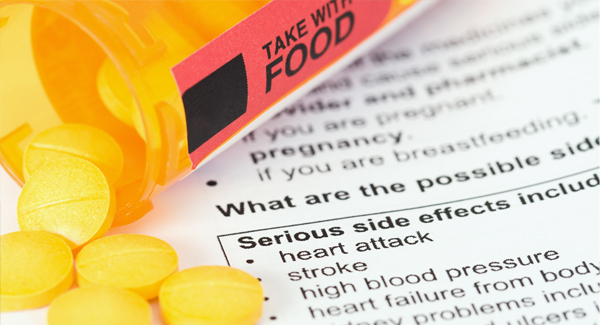Manage Multiple Medications Safely
Use these nine tips to help you stay safe when taking many medicines.
If you have arthritis, you may be juggling five or more prescriptions and over-the-counter medicines. And when your medicine cabinet is that full, there are likely to be a few pills that do not play well together. But there are many things you can do to ensure your list of meds is both safe and effective.
Hopefully your doctor reviews all those drugs regularly. But if you have multiple physicians or pharmacies, one may not know what the other one is doing. Every year nearly 1.5 million people in the U.S. are harmed by mistakes in prescription drug use. Communication is key!
How Drug Interactions Affect the Body
When you take several medicines, you can take steps to prevent potentially dangerous drug interactions. Make sure any doctor or pharmacist you see knows every treatment you are on. One medication may amplify or block the effect of another drug. Other cocktails can cause too much of one drug to stay in the body, producing an overdose. If multiple meds have the same side effects they can add up.
Aging can compound the problem. As you get older, your metabolism slows down and it takes longer for drugs to leave your system. Medicines that did not interact in your 40s could cause issues in your 60s and 70s.
Using a good pill organizer is key. But if you feel overwhelmed or confused about your growing pill case you are not alone. Taking several medicines — at the right time of day and with the right amount of food — can be tricky. Here are some tips to make your drug regimen simpler and safer.
1. Review your chart.
Sit down with your primary care doctor or pharmacist at least once a year and update your prescriptions. Eliminate unnecessary drugs. Discuss if there are newer or safer alternatives to the ones you still need.
2. Sign up for medication therapy management (MTM).
With MTM, a pharmacist will review your chart and share recommendations with your physician. They might point out that your drug dosage is a bit low or high, suggest an alternative with fewer side effects, or warn you of potential interactions.
Research shows that people who use MTM have fewer problems. It can save money, too. Check with your insurance to see if you are eligible for MTM service.
3. Stick with one pharmacy and physician.
You can avoid errors by getting your prescriptions filled at only one pharmacy. Most drug stores have computer programs that alert the pharmacist if your new prescription has the potential to interact with another drug in your file.
You may have several doctors, but it is important to have only one internist or family physician coordinating your care. Your primary care physician can make sure that you are not taking unnecessary medications or mixing potentially dangerous pills.
4. Follow the instructions.
Read the warning labels and directions. Consuming alcohol, taking certain supplements, and eating particular foods can block the action of some medicines.
5. Switch up the medication.
Struggling with side effects? Ask your doctor to change the drug or dosage. Sometimes when two drugs interact they increase or decrease the effectiveness of the other. Your doctor may be able to switch you to a different drug that provides the benefits without the interaction risk. They can also prescribe a third medication to help alleviate the side effects.
6. Understand dosing instructions.
- If you are confused about how to take your medicine, ask the pharmacist.
- “Take one tablet twice daily” and “take one tablet every 12 hours” (or morning and night) mean the same thing. “Three times a day” means every eight hours and “four times a day” means every six hours.
- “Empty stomach” is one hour before eating or two to three hours afterward. “Food” can be a full meal or a light snack, such as crackers or fruit.
7. Streamline your routine.
- Are you taking a drug more than four times a day? Ask your doctor if an alternative is available that you take less frequently.
- Space out prescriptions that interact so they can be more effective. Some medications prevent other drugs from being absorbed by the body.
8. Monitor yourself closely.
In some cases you need all the drugs you are taking, even if they have the potential to interact. When that happens, your doctor will watch you closely, usually through frequent blood tests. Unless a problem is detected, the risk of taking you off a medication may be worse than the risk of interactions.
9. Be informed and speak up!
Remember: The person who knows the most about your drug regime is you. Every time a doctor writes a new prescription, remind them of the supplements and medications you already take. If you know that two drugs you are taking have the potential to interact, ask your doctor what symptoms you should watch for. And if you have questions, ask.

Stay in the Know. Live in the Yes.
Get involved with the arthritis community. Tell us a little about yourself and, based on your interests, you’ll receive emails packed with the latest information and resources to live your best life and connect with others.


